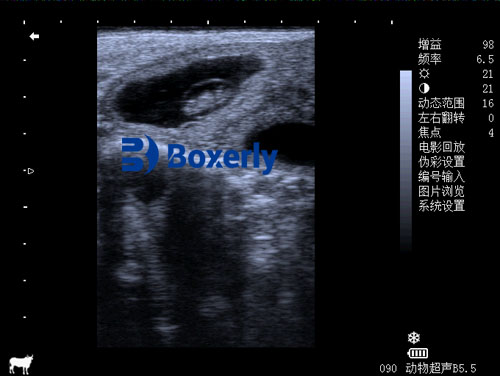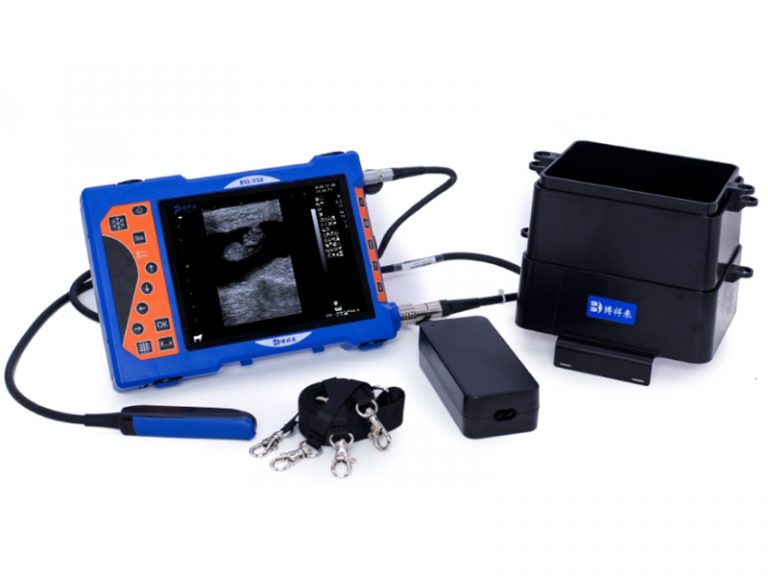Ultrasound Role in Managing Pregnant Dry Dairy Cows
On modern dairy farms around the world, success begins long before a calf is born or milk fills the tank. One of the most critical stages in dairy production is the dry period—the time when a pregnant dairy cow stops lactating, rests, and prepares for calving. While this period is essential for udder regeneration and fetal development, it also presents complex nutritional, health, and management challenges.

Veterinary ultrasound has become an indispensable tool during this phase. With its non-invasive, real-time imaging capabilities, ultrasound allows producers and veterinarians to monitor fetal development, assess maternal body condition, and make timely decisions that impact calf survival, postpartum recovery, and future milk yield.
This article explores how veterinary ultrasound supports the care of pregnant dry dairy cows, especially in their last trimester, and explains why farmers globally are integrating this technology into their management practices.
Understanding Fetal Development in Pregnant Cows
During pregnancy, fetal growth is not uniform. According to studies in both Western and Asian cattle management systems, the early months of pregnancy show a low rate of absolute fetal weight gain, although the relative growth rate is high. In contrast, the final trimester—particularly months 7 through 9—features the most substantial increase in absolute fetal weight and nutritional demand.
Ultrasound allows farmers to visualize and measure this development in real time. By the sixth month, the fetus may weigh only 10 to 15 kg, but by the time of calving, it will have grown to between 35 to 45 kg or more. In addition to weight, dry matter content and the demand for protein, calcium, and energy increase significantly during this time.
Therefore, the feeding strategy for pregnant dry cows must shift around two to three months before calving. Rations need to be adjusted to meet the heightened demands of both the developing fetus and the cow’s own reserves for lactation and recovery.
How Ultrasound Supports Feeding Decisions
One of the major advantages of ultrasound is its ability to track fetal growth and ensure the fetus is developing normally. Farmers can scan cows monthly or bimonthly to estimate fetal size and age. By comparing fetal growth trends with expected benchmarks, veterinarians can alert farmers to underdevelopment or excessive size—which might signal a risk of dystocia (difficult calving).
Additionally, ultrasound can be used to assess maternal body condition. It is crucial that pregnant dry cows maintain a moderate to slightly above-moderate body condition score (BCS). Over-conditioning (too fat) can increase the risk of ketosis and calving problems, while under-conditioning can lead to low milk production and delayed postpartum estrus.
With ultrasound, we can measure subcutaneous fat thickness and muscle depth over specific body areas—such as the loin or rump—to obtain a more objective BCS. This allows for tailored feeding regimens that support optimal energy reserves without leading to obesity.

Environmental Challenges and the Role of Ultrasound
In many regions with seasonal breeding, such as in parts of North America, Australia, and Northern Europe, cows may be in late pregnancy during harsh winters. Under these conditions, pasture quality is poor, and energy demands are higher. If cows don’t receive adequate supplemental feed during this period, their fetuses may be born underweight, and the cows themselves may fail to produce enough milk post-calving.
Ultrasound becomes essential in such environments. It enables real-time evaluation of fetal growth and maternal condition despite limited grazing. If growth stalls, it’s a sign that energy and protein levels must be increased. This prevents the common issues of weak calves, poor milk production, and delayed rebreeding.
Preventing Complications Through Monitoring
Another major benefit of veterinary ultrasound is the early detection of complications. For example:
-
Excessive fetal size: This can lead to dystocia, especially in first-time heifers or cows bred with larger beef breeds. Early identification enables planning for assisted delivery.
-
Placental abnormalities: Sometimes, ultrasound reveals irregular placental shape or thickness, suggesting inflammation or dysfunction. This may warrant changes in management or medication.
-
Fluid abnormalities: An unusually high or low amount of amniotic fluid might point to issues with fetal health, infection, or maternal metabolism.
-
Multiple pregnancies: Though rare in dairy cattle, twins can be detected via ultrasound. This helps plan nutrition, calving assistance, and postpartum care.
By identifying these risks early, farmers can work with veterinarians to adjust management strategies and reduce losses at calving.
Nutrition, Supplements, and Safe Feeding Practices
Ultrasound helps confirm fetal growth stage and maternal reserves, which in turn guide nutritional plans. The last two to three months of pregnancy require high-quality forages and concentrates rich in energy, protein, and minerals such as calcium, magnesium, and phosphorus.
Veterinarians recommend avoiding moldy or frozen feed, as these can cause abortions or digestive upset. Ensuring vitamin A, D, and E levels are adequate is equally important for fetal development and immune readiness.
Using ultrasound, farmers can detect whether the current diet supports the targeted 45–70 kg maternal weight gain before calving. This reserve not only ensures a smoother birth but also supports early lactation and quicker postpartum estrus.
Group Management and Welfare Considerations
In many Western farms, pregnant dry cows are separated from the lactating herd to form specialized groups. This is not only to control diet but also to reduce stress. Bumping, competition, and excessive movement can lead to injury or abortion.
Ultrasound supports this group management by allowing periodic checks without disrupting the animal’s environment. Cows that appear inactive or are carrying large calves can be scanned to confirm fetal well-being and assess if they need closer monitoring.
In the case of crossbred cows or large-caliber sires, ultrasound is critical. For example, yellow cattle crossed with European beef breeds like Simmental or Charolais are at increased risk of difficult births. If ultrasound suggests a large fetus, farms can prepare timely obstetric support or opt for early intervention.
International Best Practices
Around the world, veterinary ultrasound is increasingly embedded in dairy herd reproductive protocols. In the United States, it is common for large dairies to use transrectal ultrasound at 30 and 60 days post-breeding, and again during the dry period to monitor fetal viability.
In New Zealand and Australia, where pasture-based systems dominate, mobile ultrasound units allow veterinarians to scan cows directly in paddocks. This ensures minimal stress and allows for immediate management decisions.
European farms emphasize fetal sexing and growth tracking via ultrasound, which helps plan future replacement heifer strategies. Meanwhile, in developing countries like Brazil and India, ultrasound is gaining traction as a cost-effective method to improve calving outcomes and reduce postpartum disease.
Conclusion
Veterinary ultrasound has revolutionized the management of pregnant dry dairy cows. By providing real-time insights into fetal growth, maternal condition, and potential complications, it allows farmers to make precise, data-driven decisions. These decisions directly influence the health of the calf, the productivity of the cow, and the profitability of the farm.
Whether you’re managing a large Holstein herd in Wisconsin or a small Jersey operation in Ireland, ultrasound is becoming a cornerstone of reproductive and nutritional planning. With continued global adoption and ongoing technological improvements, ultrasound will remain a key contributor to sustainable and efficient dairy farming.





